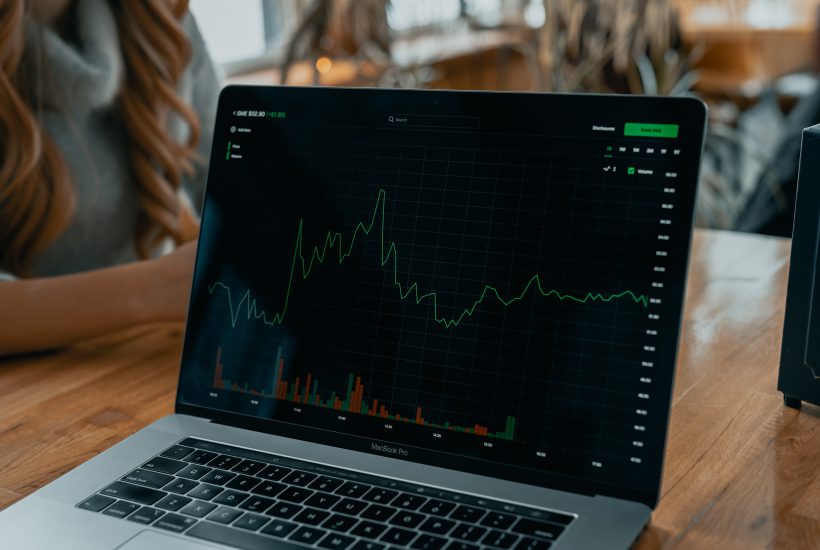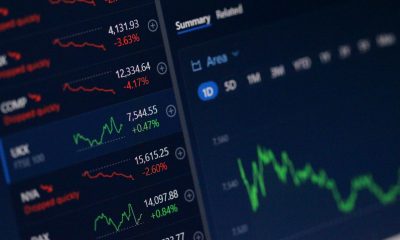Business
How the Markets Performed in 2022. An Economic Review
In summary, the performance of 2022 was heavily influenced by the Fed’s rapid response to the inflationary pressures of 2021. The outlook for 2023 is uncertain, with a potential recession looming. Despite this, the stock market is expected to rebound, while the bond market offers higher interest rates. Chaos can breed opportunity, so investors should be prepared for the coming year.

Recent memory has left no shortage of events to say good riddance to the year past, from the coronavirus pandemic and lockdowns of 2020 and 2021, to the inflation, war in Ukraine, and economic uncertainty of 2022. However, within each of these years, as in every year, there is much to celebrate. The year 2022 blended such ups and downs to create the puzzling “good news is bad news and bad news is good news” paradox that investors grew tired of hearing (more on this later).
Narrow framing is a term in behavioral economics that describes evaluating risk in isolation rather than mixing it with other risks, causing one to make intuitive decisions rather than systematic reasonable decisions. When using narrow framing, two other powerful factors appear—loss aversion and regret. For example, I offer to flip a coin and if it lands heads, you win $10,000, but if it lands tails, you lose $1,000. Countless studies such as this have been conducted and the overwhelming majority of participants decline the offer, proving the power of loss aversion and the fear of future regret if one were to instantly lose $1,000.
Now, if I were to offer the same experiment not with one coin flip, but rather repeated 100 times over, suddenly the offer becomes more appealing. The expected net return of 50 heads (win $500,000) and 50 tails (lose $50,000) is $450,000. The chances for any negative net return after 100 coin flips are extremely remote. This is an example of broad framing. These biases or mindsets are important for investors to notice at all times, but especially when stock market returns deviate far from the norm, whether the very positive experiences of 2019 and 2021 or the negative of 2022.
Amid the flurry of 24/7 headlines (extreme narrow framing), it’s easy to lose track of where we are. Here is a summary of the markets’ performance in 2022, besides their respective historical annualized average returns for broad framing assistance:
• S&P500: -19.95% (average 7.97% since 2000)
• DJIA: -9.20% (average 9.23% since 2000)
• Nasdaq: -33.89% (average 7.53% since 2000)
• Crude Oil WTI: 6.71% (average 9.63% since 2000)
• Gold: -0.13% (average 24.95% since 2000)
• Bloomberg US Aggregate Bond: -13.01% (average 4.11% since 2000)
• Bitcoin: -64.15% (average 719.23% since 2009)
• Tesla: -65.03% (average 583.92% since 2010)
• Amazon: -49.62% (average 114.90% since 2000)
• Occidental Petroleum: 117% (average 25.53% since 2000)
From a framing standpoint, this data allows us to compare a narrow frame of the 12 months of 2022 compared to the broader frame of the first 22 years of this century. But how narrow is narrow and how broad is broad enough? Based on the info above, gold might appear attractive, but the astute investor might recall that gold spent most of the 1980s and 1990s in a steady decline, and the majority of its 21st-century gain occurred in the first decade. Occidental Petroleum’s returns look great this year and in the aggregate since 2000, however, an investor who purchased the stock at its peak in April of 2011 is still down 37.08%! Timeframes that include an IPO (initial public offering), like Tesla or the origin of Bitcoin, naturally reflect extreme volatility in its early stages.
The moral of this 21st-century example is that across a broad representation of indices, commodities, and stocks, over a relatively broad timeframe, all have positive total gains and average returns. Yet, depending on narrow time frames they each have played the hero and the villain to investors’ portfolios. This reinforces the need for investors to commit to the financial plan that fits their risk tolerance and goals, or risk the harmful mistakes inherent to emotional decision-making within narrow frames.
This is the broad and unemotional approach to wealth management I deploy with your accounts and financial plans. With that said, we do seek to achieve relative gains within your risk parameters through rebalancing and reallocation based on what we believe to be discounts within the markets. While nearly every major asset class, except for oil and cash, did finish 2022 in the red, value investors fared better than the overall market, and clients who own fixed annuities, buffer annuities, and/or Whole Life cash values far outpaced the beating fixed income took this past year.
To recap, the performance of 2022 was driven by The Fed and global central banks’ interest rate policies more than any other factor
You may recall that in December of 2021, the CPI (consumer price index) was 7.0%, its highest level in over 40 years, yet the Federal Funds Effective Rate was 0.08%. The Fed switched from dismissing inflation as transitory to suddenly calling it an emergency at breakneck speed. The Fed entered 2022 with a target interest rate of 0.25-0.50%, but by year-end The Fed hiked nearly 10x this to 4.50%, while simultaneously ending quantitative easing. These fast rate hikes were supported throughout the year by strong economic data and rock-bottom unemployment (good economic news provoking bad Fed news). However, there is a proven lengthy lag for interest rate adjustments to matriculate through the economy before it stunts growth and consumer and business spending. Investors know the Fed was far too late to address inflation and may now hope they are not too late to slow their rate hikes.
Looking forward, the proverbial elephant in the room for 2023 is the word “recession”. While economists can debate what qualifies as a recession (see articles and podcasts I produced recently on the technical term), and many posit that the Fed is trying to create a recession to end inflation, what matters most to investors is the markets’ expectations. Remember that, historically, the stock market has performed worst leading up to a recession and has benefited from a rebound while in the middle to end of a recession. Hence the stock market’s reputation as a leading economic indicator. This provides a source of optimism as the Fed looks to slow and/or stop interest rate hikes, in that the market may have already priced in the earnings reports corporate America will produce in the next year. Conversely, the bond market which had one of its worst years on record in 2022, can now offer higher interest rates to savers. While no one ever wants a down year, it is often true that chaos breeds opportunity.
__
(Featured image by Tech Daily via Unsplash)
DISCLAIMER: This article was written by a third party contributor and does not reflect the opinion of Born2Invest, its management, staff or its associates. Please review our disclaimer for more information.
This article may include forward-looking statements. These forward-looking statements generally are identified by the words “believe,” “project,” “estimate,” “become,” “plan,” “will,” and similar expressions. These forward-looking statements involve known and unknown risks as well as uncertainties, including those discussed in the following cautionary statements and elsewhere in this article and on this site. Although the Company may believe that its expectations are based on reasonable assumptions, the actual results that the Company may achieve may differ materially from any forward-looking statements, which reflect the opinions of the management of the Company only as of the date hereof. Additionally, please make sure to read these important disclosures.

-

 Impact Investing2 weeks ago
Impact Investing2 weeks agoEU Health Council Advances Key Pharmaceutical and Public Health Reforms
-

 Africa4 days ago
Africa4 days agoBank Al-Maghrib’s Final 2025 Meeting Expected to Maintain Key Interest Rate
-

 Crowdfunding2 weeks ago
Crowdfunding2 weeks agoOpstart Unifies Crowdlender: A Streamlined, Wallet-Free Investment Hub Launches December 2025
-

 Crowdfunding7 days ago
Crowdfunding7 days agoStar Citizen Funding Soars as 2025 Becomes Its Most Successful Year Yet

























